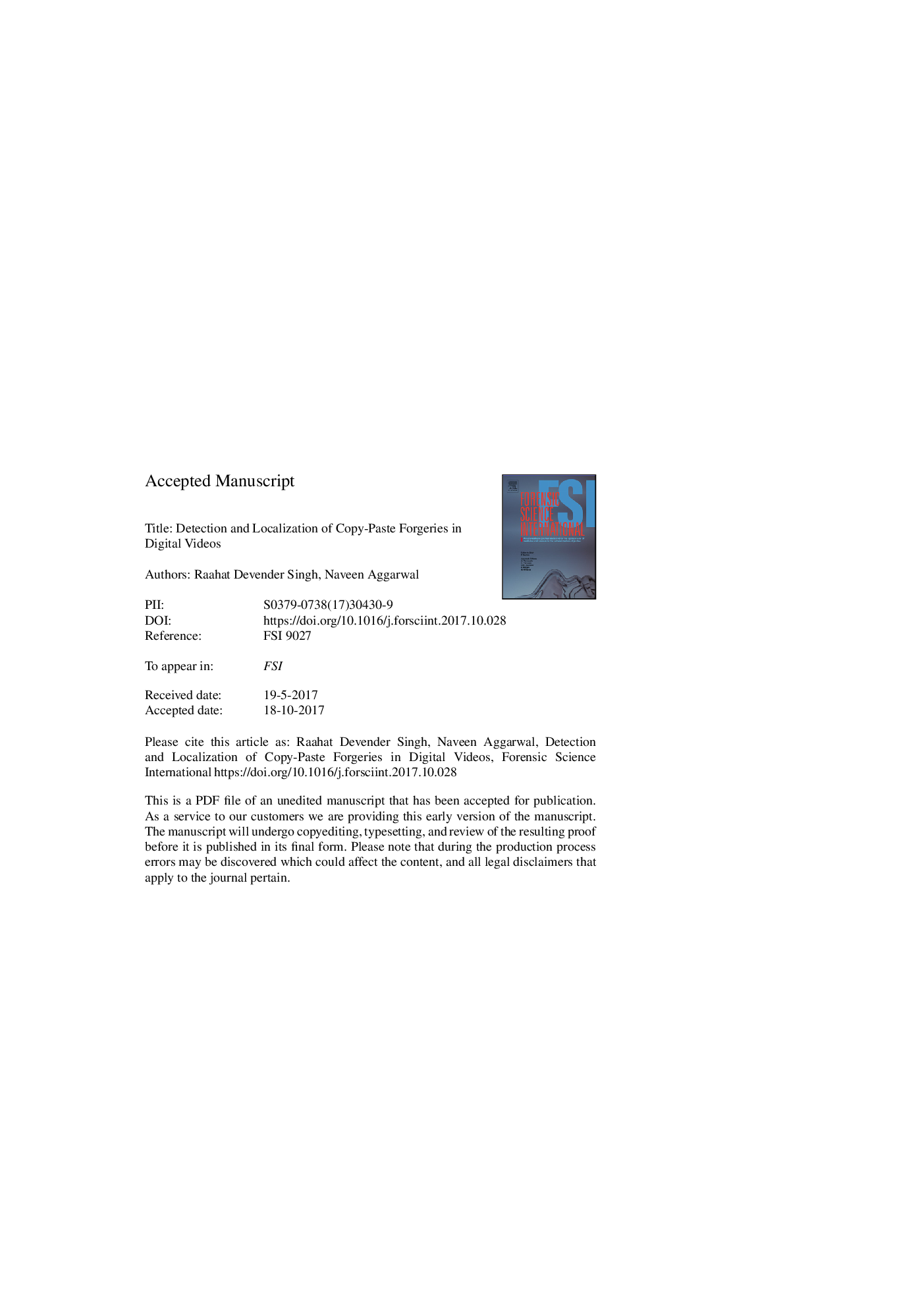| کد مقاله | کد نشریه | سال انتشار | مقاله انگلیسی | نسخه تمام متن |
|---|---|---|---|---|
| 6551425 | 1421969 | 2017 | 32 صفحه PDF | دانلود رایگان |
عنوان انگلیسی مقاله ISI
Detection and localization of copy-paste forgeries in digital videos
ترجمه فارسی عنوان
تشخیص و محلی سازی جعل کپی رایت در فیلم های دیجیتال
دانلود مقاله + سفارش ترجمه
دانلود مقاله ISI انگلیسی
رایگان برای ایرانیان
کلمات کلیدی
تشخیص جعل جعلی، تشخیص هوشیاری پزشکی قانونی دیجیتال، تأیید هویت محتوا، جعل کپی رایت، جعل نسخه کپی،
موضوعات مرتبط
مهندسی و علوم پایه
شیمی
شیمی آنالیزی یا شیمی تجزیه
چکیده انگلیسی
Digital videos can suffer from several kinds of manipulations, but perhaps, one of the most consequential forgeries is copy-paste forgery, which involves insertion/removal of objects into/from video frames. Copy-paste forgeries alter the information presented by the video scene, which has a direct effect on our basic understanding of what that scene represents, and so, from a forensic standpoint, the challenge of detecting such forgeries is especially significant. In this paper, we propose a sensor pattern noise based copy-paste detection scheme, which is an improved and forensically stronger version of an existing noise-residue based technique. We also study a demosaicing artifact based image forensic scheme to estimate the extent of its viability in the domain of video forensics. Furthermore, we suggest a simplistic clustering technique for the detection of copy-paste forgeries, and determine if it possess the capabilities desired of a viable and efficacious video forensic scheme. Finally, we validate these schemes on a set of realistically tampered MJPEG, MPEG-2, MPEG-4, and H.264/AVC encoded videos in a diverse experimental set-up by varying the strength of post-production re-compressions and transcodings, bitrates, and sizes of the tampered regions. Such an experimental set-up is representative of a neutral testing platform and simulates a real-world forgery scenario where the forensic investigator has no control over any of the variable parameters of the tampering process. When tested in such an experimental set-up, the four forensic schemes achieved varying levels of detection accuracies and exhibited different scopes of applicabilities. For videos compressed using QFs in the range 70-100, the existing noise residue based technique generated average detection accuracy in the range 64.5%-82.0%, while the proposed sensor pattern noise based scheme generated average accuracy in the range 89.9%-98.7%. For the aforementioned range of QFs, average accuracy rates achieved by the suggested clustering technique and the demosaicing artifact based approach were in the range 79.1%-90.1% and 83.2%-93.3%, respectively.
ناشر
Database: Elsevier - ScienceDirect (ساینس دایرکت)
Journal: Forensic Science International - Volume 281, December 2017, Pages 75-91
Journal: Forensic Science International - Volume 281, December 2017, Pages 75-91
نویسندگان
Raahat Devender Singh, Naveen Aggarwal,
